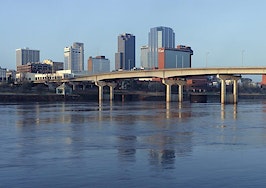Entering 2015, owners, developers and managers eyeing significant redevelopment projects at existing properties braced for a 5 percent or greater rise in overall construction material costs.
Nearly halfway through the year, a trio of widely used materials has increased in price over the past 12 months, while several others have dipped in cost.
The price of gypsum wallboard rose by 2.3 percent year over year in April, according to data from the Associated General Contractors. This cost increase is minimal for this material, as increases of 14 to 16 percent were more common during the past four years.
The prices of concrete and cement also rose during the same period, with the latter increasing by 7.5 percent.
A 5.1 percent increase in the overall cost of concrete products during the past 12 months can be partially attributed to a 5.9 percent rise in the value of ready-mix concrete.
Other concrete products — concrete block and brick, concrete piping, and brick or structural tiles — increased in costs by 2.1 percent, 3.2 percent and 2.1 percent, respectively.
To offset these upticks in material costs, owners, developers and managers will likely implement cost saving strategies.
These tactics could include the bulk purchase and storage of materials and appliances, along with the selection of different finishes, skin materials and roofing systems when redeveloping an existing asset or designing a new project.
While material cost increases are a reality, so are dips in the prices of certain building products. Both lumber and plywood dipped in cost during the past 12 months, declining by 3.7 percent. This decline follows three years in which lumber and plywood rose on average by roughly 8 percent.
The cost of insulation, along with asphalt, tar and siding products, also dipped in cost over the year ending in April. Insulation dropped by 2 percent, while roofing products slid in pricing by 1.9 percent. Lastly, the cost to transport goods has declined significantly: down 42.5 percent during the last 12 months.







